Easy Instant Pot Chicken Stock Recipe
One of the best ways to start cooking from scratch is to take one thing you buy from the grocery store and make it yourself. Homemade chicken stock is one of the easiest recipes to try first, especially if you have an Instant Pot. Making chicken stock in the Instant Pot is one of my favorite uses for it. It can be two recipes in one; when I make a whole chicken in the Instant Pot, I always make stock afterwards. Instead of babysitting a vat of bones and vegetable scraps on the stove for three hours, I can put it in the pressure cooker and let it go for an hour. After straining, I have chicken stock to use all week.
Chicken stock from the grocery store isn’t what I would even consider stock. It’s thin, watery, and very lightly colored. There is no discernible flavor and you end up paying a premium for it. Homemade chicken stock is golden with fat that rises to the top and a jiggly consistency that lets you know that you’ve extracted all of the gelatin and nutrients from the chicken bones, skin, and cartilage. You end up with so much flavor using the parts you would otherwise throw away. It’s a perfect way to use what you have to create a product that you can’t buy from the store.
Cooking your own stock will lead you one step closer to cooking from scratch and empowering you to take a look at other ways to cook from scratch in your life. If you have an electric pressure cooker or even a stovetop pressure cooker, let’s fire it up! We’re about to create the best chicken stock in this easy recipe that you can use everyday.
Benefits of Homemade Chicken Stock
Chicken bones are filled with calcium and phosphorus. The skin and cartilage have collagen. The vegetable scraps contain various vitamins depending on what you’re using. Pressure cooking them allows these constituents to be extracted into the water. If you’ve ever heard the phrase “drink the water you cook your spinach in”, you understand this principle. Vitamins and minerals are pulled into the water; if you’re cooking vegetables in the water, you’re losing them from your food. But in stock, having them in the water is exactly what we want. You end up with a deeply nourishing, vitamin rich product when you make stock at home.
Collecting Ingredients
I am an avid gardener and vegetable eater. Growing and cooking with vegetables produces a lot of waste. I compost in bins in my backyard and a worm farm in my house so my kitchen scraps go in them. Even still I always have plenty of extra vegetable scraps around. Making stock is a great way to use those bits and pieces to feed my family. I can peel a carrot here, dice an onion there, and use the skins, ends, and peels to create liquid gold. Even vegetables past their prime in the refrigerator can be put into the stock pot.
Whenever you’re cooking, place a bowl for composting and a bowl of vegetable scraps next to you. Items like fruits peels, rinds, and cores can go to the compost or worms. Items such as garlic skins, onion peels and ends, vegetable peels, and herb stems can go in the stock bowl. Once you’re done prepping, put the veggie scraps in a freezer bag and save them in the freezer until you have enough.
You can do this process with your chicken bones as well. If you make chicken thighs or drumsticks, save the leftover bones after you eat and put them in the freezer as well. If you’ve made a whole chicken in the Instant Pot, that’s perfect for stock. Even if you buy a rotisserie chicken, once you’re done eating it, save those bones!
When to Make Chicken Stock
You can make chicken stock whenever you need it. For the Instant Pot, it is best to have the bottom layer of the pot filled with bones, cartilage, and skin. I wait until I have enough bones to fill the first three inches. I add about six inches of vegetable scraps on top. This is the equivalent of one freezer bag filled with bones and one freezer bag filled with vegetables. Everything can go into the Instant Pot frozen so it’s easy to fill and start pressure cooking.
The size of the Instant Pot is perfect for making just enough flavorful chicken stock to last me for a week. When I used to make chicken stock on the stovetop, I would use a gigantic stock pot and end up with way too much stock. I used to freeze it in silicone molds for later use, but these days I prefer to make a smaller batch that I can reasonably handle.
If you prefer not to save scraps, you can use whole vegetables as well. Just chop then into inch pieces so they fit and follow the same process. If I need stock, but don’t have scraps, I use a whole onion, one carrots, and two celery stalks. I’ll throw in a few cloves of garlic and anything else that seems tasty like chopped pieces of ginger or hot peppers. This recipe is very customizable to your tastes and what you have.
Chicken Stock Yield
The amount of chicken stock you get each time you make it can vary. Depending on how many cups or quarts of water you use and how much you pack your Instant Pot. I like to have two half gallon mason jars ready. If you prefer to use quart mason jars, you’ll need about four.
Uses for Chicken Stock
Chicken stock is a versatile ingredient to have in the kitchen. You can use it to make a quick soup or sip if you’re sick. If I’m starting to feel ill, I’ll warm up my homemade broth gently on the stovetop, put it in a mug, and add minced fermented garlic into it. It’s warming, cozy, and the fermented garlic boosts your immune system and fights bad bacteria in your system.
Cooking rice in chicken stock will impart extra flavor and nutrients to your dish. It adds a depth of flavor that you can’t quite pinpoint, but takes a meal from good to great. I love having simple additions to my meals that make my family wonder what’s in them without having to do a lot of work.
Stock is irreplaceable in sauces and gravies. Using high-quality homemade stock allows you to make nutritious and delicious meals. So feel free to pour that gravy on those mashed potatoes. Once you make it yourself, you’ll wonder how you ever got around in your kitchen without it.
Equipment
Instant Pot with inner pot
Fine mesh strainer
Large bowl
Ladle
Half gallon or quart mason jars
Funnel
Ingredient List
Leftover chicken carcass: The best way to make chicken stock is with the scraps from other meals including all bones, skin, and cartilage. If you make a chicken in the Instant Pot, save the scrap, put them in a bag, and freeze until you’re ready to make stock.
Vegetable scraps: Save the peels and ends of celery, garlic, onion, carrot, tomato, and/or peppers. Instead of discarding your vegetable scraps, save them in a freezer bag to make stock later. It’s a great way to reduce waste.
Or if you’re using whole vegetables, use one onion, one carrot, and two celery stalks.
Salt: This is optional. I don’t like to salt mine so that I can control the salt when I’m using it to cook a recipe. If you want to add salt, do about 1 tablespoon. You can always add more later.
Step By Step Instructions
Preparation
- Gather your chicken bones, vegetable scraps, aromatics, and spices
- If using frozen vegetable scraps, there is no need to thaw, just make sure everything fits in the inner pot.
- If using fresh vegetables, make sure things are cut into manageable pieces so you can extract the most out of them. An inch thick is a good size.
Using the Instant Pot
- Place chicken bones and skins in the bottom on the pot, then the vegetables, herbs and aromatics, and spices
- Add enough filtered cold water to come up just under the Max Fill Line. It was about 12 cups of water for me
- Add 2 tablespoons of apple cider vinegar to the pot and give is a little stir. Let it sit for 15 minutes to begin to draw nutrients out of the bones and scraps.
Pressure Cooking
- Secure the lid onto the Instant Pot
- Place the pressure valve release to Sealing
- Plug the Instant Pot in and set to Manual Pressure to High Pressure
- Set timer for 1 hour
Natural Release
- Once the timer has gone off, unplug the Instant Pot and let it come down in a natural pressure release. Wait for the floating pressure gauge to drop before attempting to open it.
- This recipe is mostly water and if you attempt to do a quick pressure release, a stream of boiling hot stock is going to shoot out of that pressure valve all over you and your kitchen.
- The stock will still be extremely hot when you open it so allow it to sit opened for about 15 minutes to become easier to work with.
- Set up your large bowl with a fine mesh sieve over it.
- Ladle the stock into the strainer
- If it gets too full, use the back of your ladle to press down on the vegetables and bones to extract more liquid. Then discard the bones and scraps into the garbage can
- Continue to do this step until the entire pot is strained
Storing Stock
- Set up your mason jar with a funnel over it
- Ladle the hot stock into the jars allowing for a little headspace for expansion
- Put a lid on the jars and leave them on the counter to cool before placing in your refrigerator
- Use within 7 days
Tips for Success
- Use any vegetable scraps you have on hand. Before I make stock, I go through my refrigerator and look for anything that is past its prime. I’ve used garlic bulbs, wrinkly ginger and cherry tomatoes, carrot numbs, chopped up onions that are starting to get a little soft, you name it.
- Don’t use lettuces, squashes, cucumbers, or cruciferous vegetables like broccoli. Anything with a lot of water isn’t going to impart flavor and would just be a waste of ingredients. And broccoli or cauliflower is just going to give it a weird aroma and flavor.
- You can store the stock in the refrigerator for up to 7 days or freeze it for 3 months. I like to freeze it in ice cube trays or silicone molds to be able to pull it out and use a measured amount without having to let an entire block of stock thaw.
- When the stock cools, it should be gelatinous. This is a good thing. The gelatine is pulled from the bones, skin, and cartilage. It will melt when heated.
FAQs
Once the Instant Pot comes up to pressure, it takes 1 hour to cook. This ensures that all of the nutrients and flavors are pulled out of the ingredients.
You will save time. Stovetop chicken stock can take hours to cook. You save money because you’re not buying store bought stock and you can use the scraps you’d normally throw away so it’s essentially free. And it actually has flavor!
Using the Instant Pot to make delicious, flavorful stock is a real game changer. You waste less of your food and can create a nutrient-dense food to nourish your family. Canned or boxed stock cannot compare. So save your money and use your “trash” to create liquid gold.
Try this simple chicken stock recipe once and I know you’ll never go back to store bought again.
Thank you for reading this recipe. Please leave a comment if you made this recipe and what you thought about it especially compared to store bought. Let me know what you made!
As always with your food, you can tailor this recipe to your family’s tastes and preferences. Experiment with flavors or just use what’s past its prime in your fridge. Take what serves you and leave the rest behind.
Instant Pot Chicken Stock
Equipment
- Instant Pot with inner pot
- Fine Mesh Strainer
- Large Bowl
- 2 Half Gallon Mason Jars or 4 quart jars
- Funnel
Ingredients
- Leftover chicken carcass including all bones, skin, and cartilage
- Vegetable scraps peels, and ends (celery, garlic, onion, carrot, tomato, pepper)
- If using whole vegetables use one onion, one carrot, and two celery stalks.
- Aromatics fresh herbs such as rosemary, thyme, oregano, bay leaves, etc
- Whole peppercorns
- 2 TBS Apple cider vinegar
- Optional: salt. I don’t like to salt mine so that I can control the salt when I’m using it to cook a recipe.
Instructions
Preparation
- Gather your chicken bones, vegetable scraps, aromatics, and spices
- If using frozen vegetable scraps, there is no need to thaw, just make sure everything fits in the inner pot.
- If using fresh vegetables, make sure things are cut into manageable pieces so you can extract the most out of them. An inch thick is a good size.
Using the Instant Pot
- Place chicken bones and skins in the bottom on the pot, then the vegetables, herbs and aromatics, and spices
- Add enough filtered cold water to come up just under the Max Fill Line. It was about 12 cups of water for me
- Add 2 tablespoons of apple cider vinegar to the pot and give is a little stir. Let it sit for 15 minutes to begin to draw nutrients out of the bones and scraps.
Pressure Cooking
- Secure the lid onto the Instant Pot
- Place the pressure valve release to Sealing
- Plug the Instant Pot in and set to Manual Pressure to High Pressure
- Set timer for 1 hour
Natural Release
- Once the timer has gone off, unplug the Instant Pot and let it come down in a natural pressure release. Wait for the floating pressure gauge to drop before attempting to open it.
- This recipe is mostly water and if you attempt to do a quick pressure release, a stream of boiling hot stock is going to shoot out of that pressure valve all over you and your kitchen.
- The stock will still be extremely hot when you open it so allow it to sit opened for about 15 minutes to become easier to work with.
- Set up your large bowl with a fine mesh sieve over it.
- Ladle the stock into the strainer
- If it gets too full, use the back of your ladle to press down on the vegetables and bones to extract more liquid. Then discard the bones and scraps into the garbage can
- Continue to do this step until the entire pot is strained
Notes
- Set up your mason jar with a funnel over it
- Ladle the hot stock into the jars allowing for a little headspace for expansion
- Put a lid on the jars and leave them on the counter to cool before placing in your refrigerator
- Use within 7 days
- Use any vegetable scraps you have on hand. Before I make stock, I go through my refrigerator and look for anything that is past its prime. I’ve used garlic bulbs, wrinkly ginger and cherry tomatoes, carrot numbs, chopped up onions that are starting to get a little soft, you name it.
- Don’t use lettuces, squashes, cucumbers, or cruciferous vegetables like broccoli. Anything with a lot of water isn’t going to impart flavor and would just be a waste of ingredients. And broccoli or cauliflower is just going to give it a weird aroma and flavor.
- You can store the stock in the refrigerator for up to 7 days or freeze it for 3 months. I like to freeze it in ice cube trays or silicone molds to be able to pull it out and use a measured amount without having to let an entire block of stock thaw.
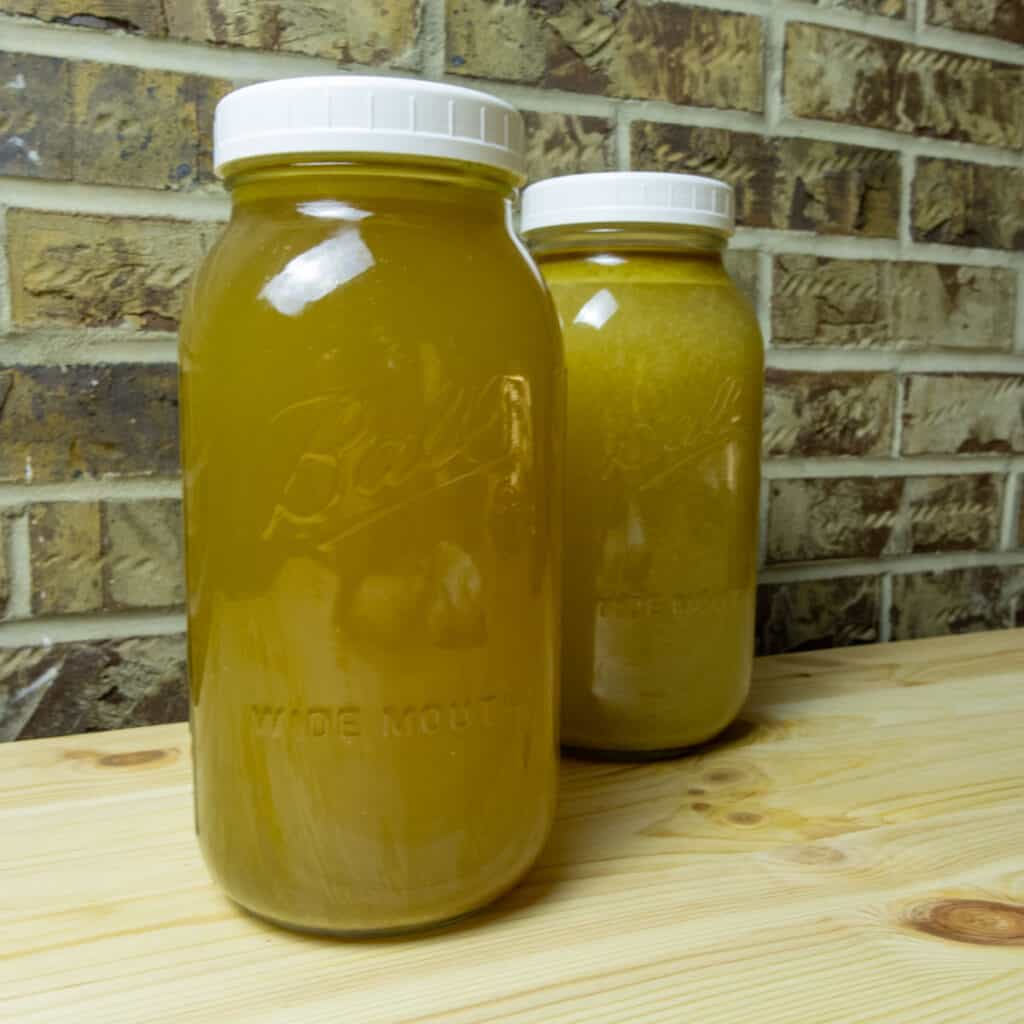

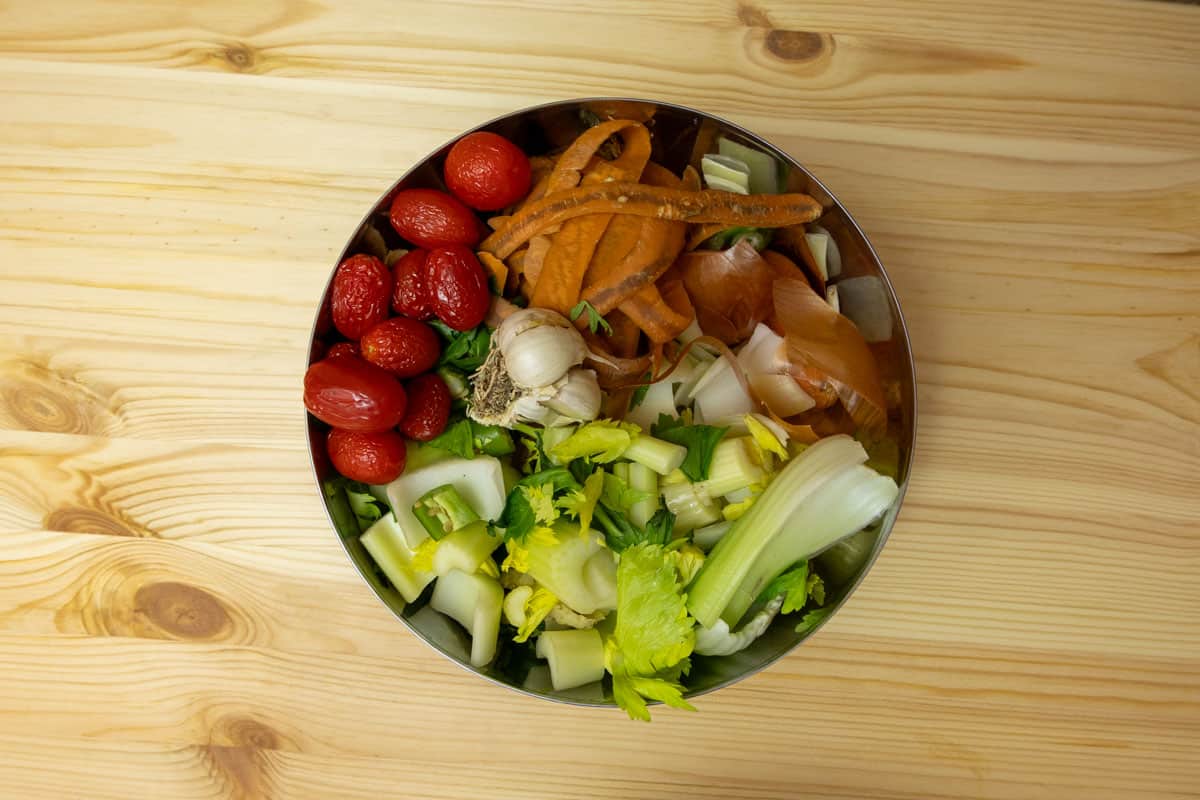
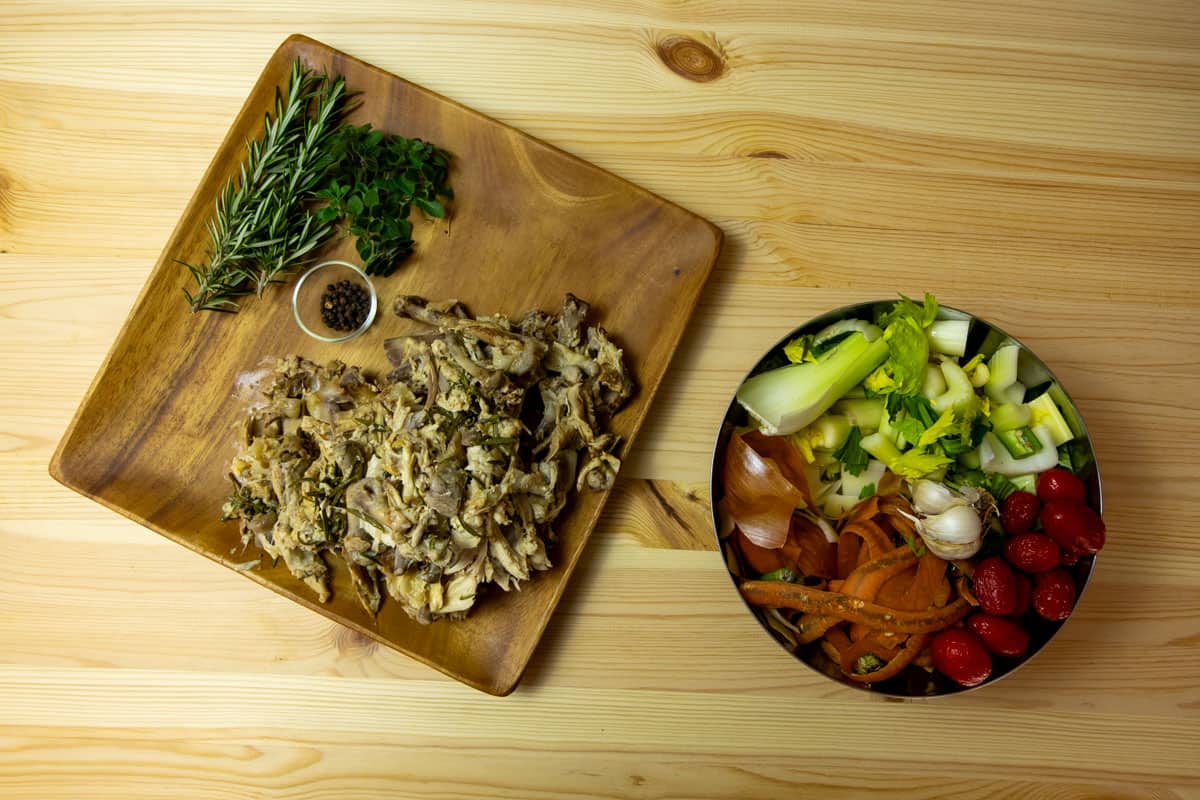
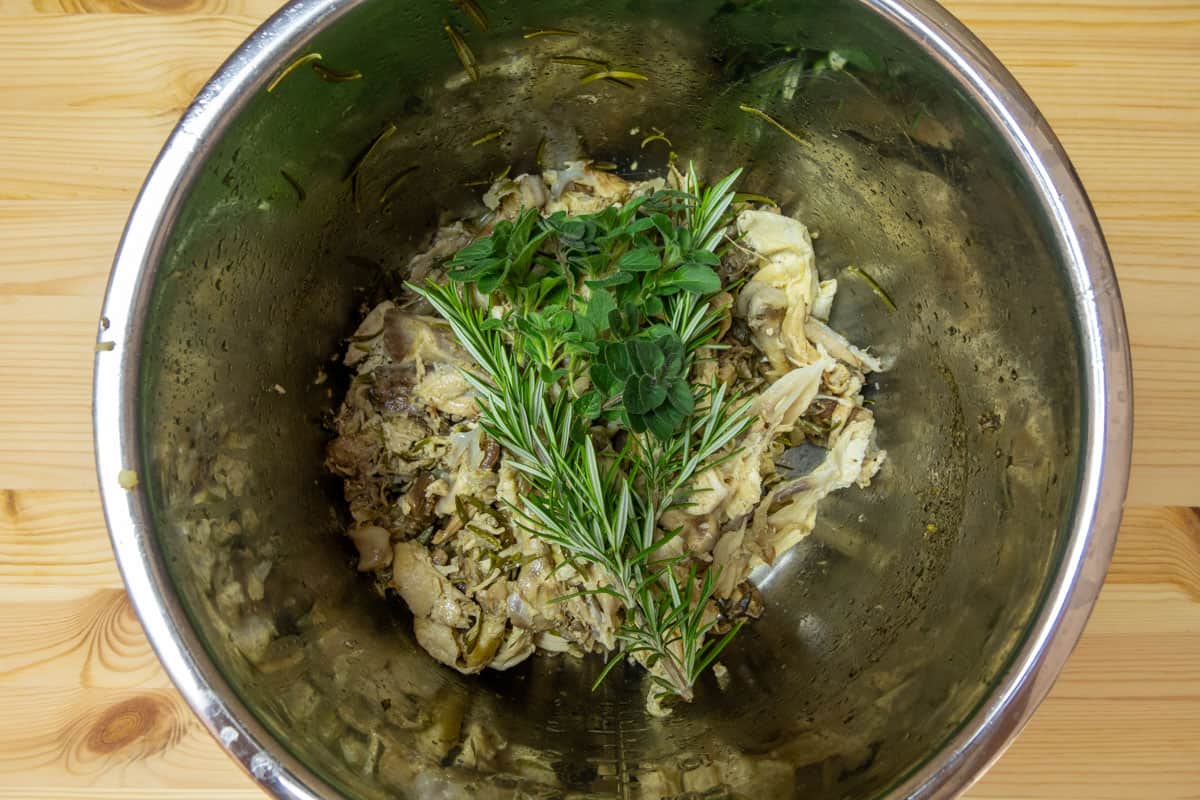
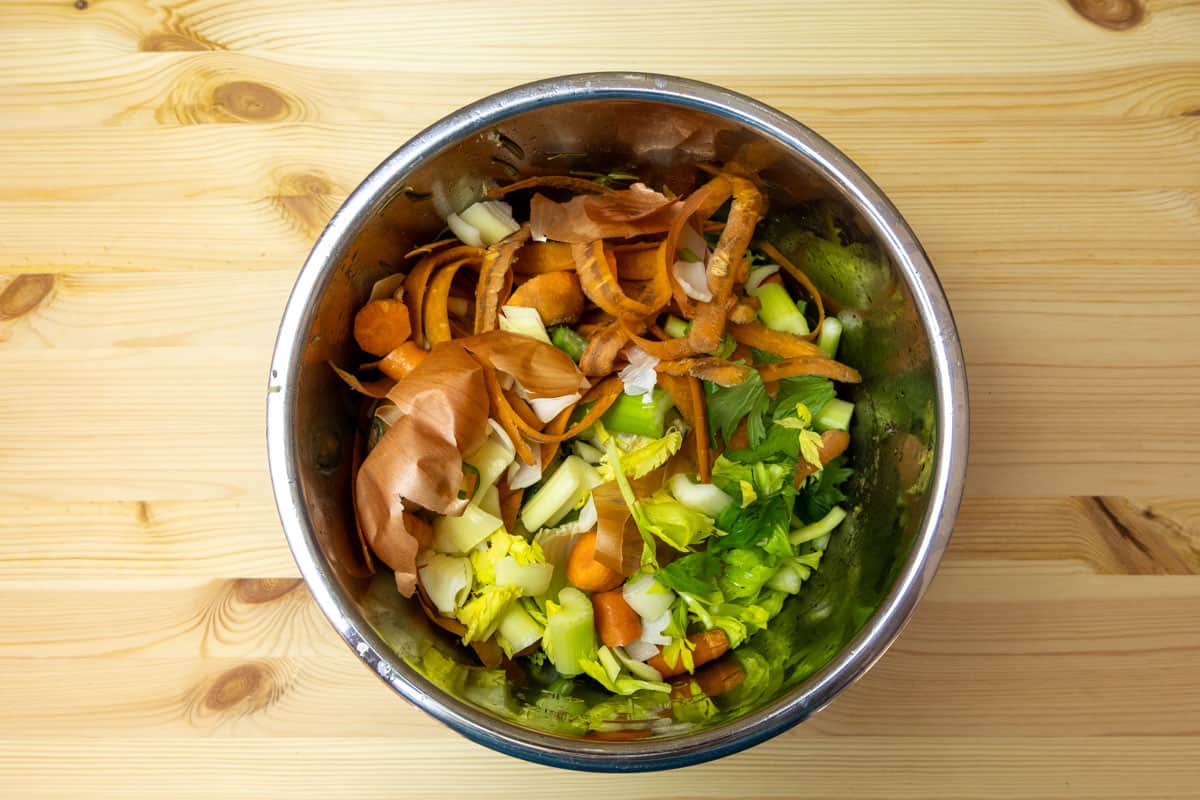
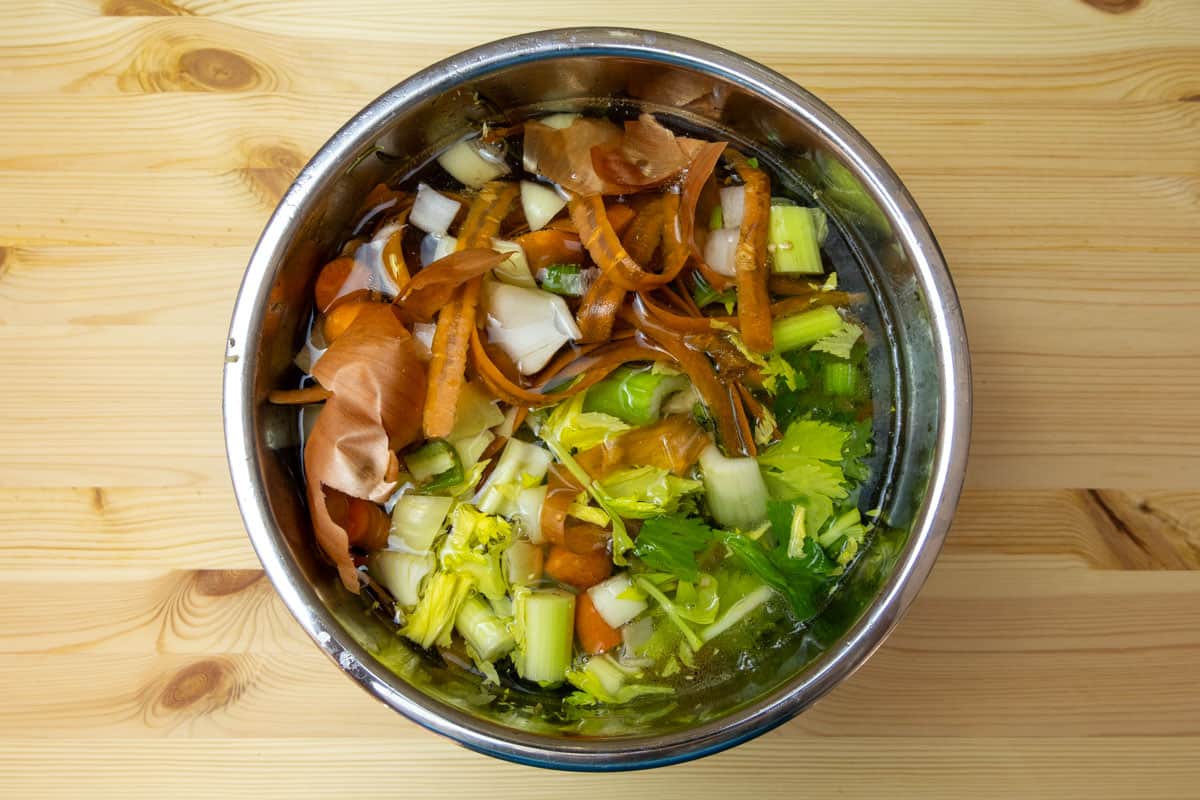

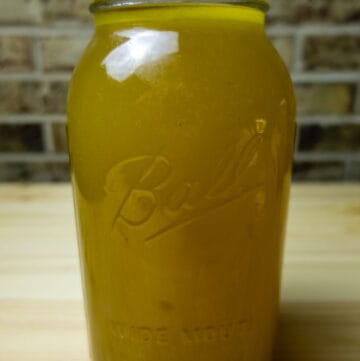

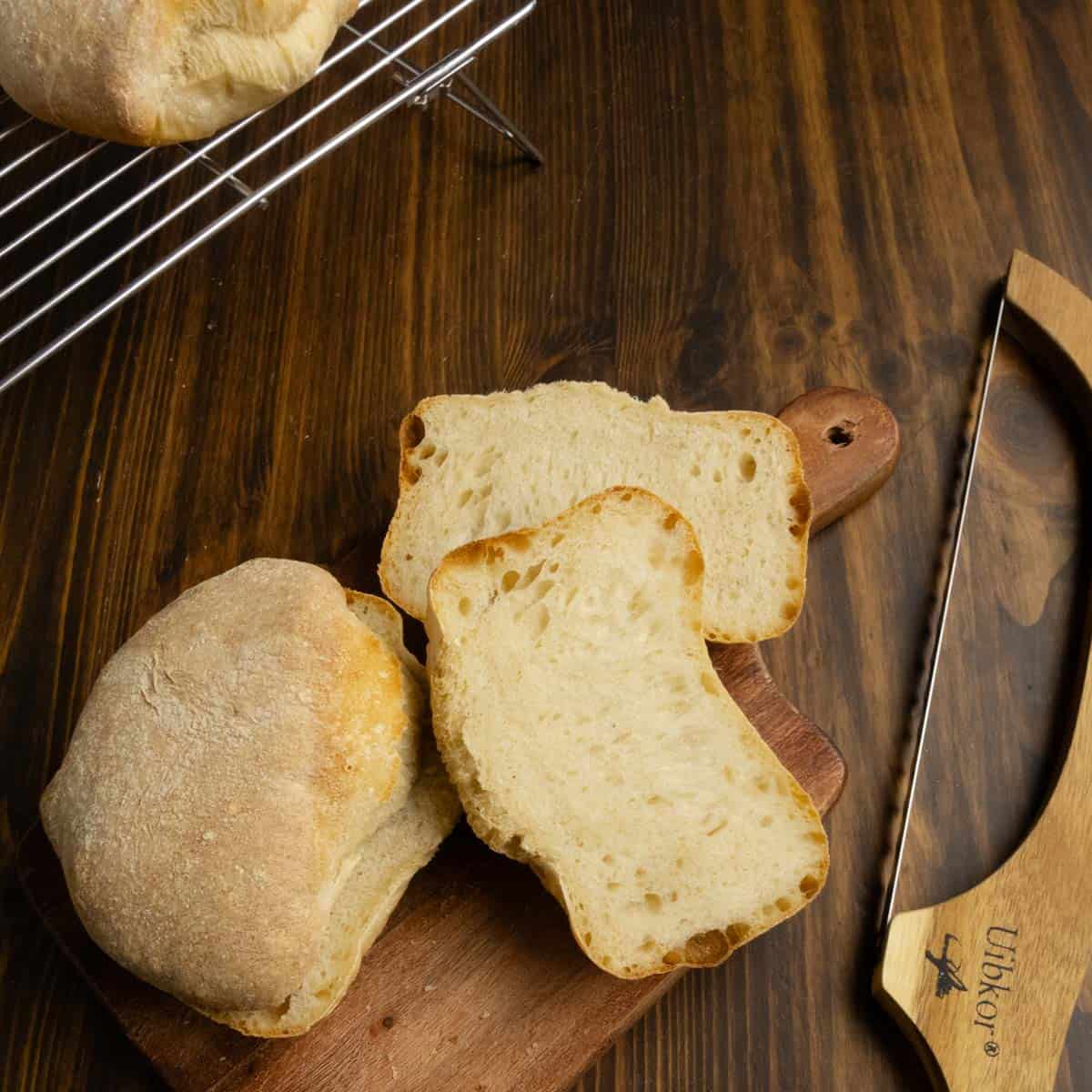
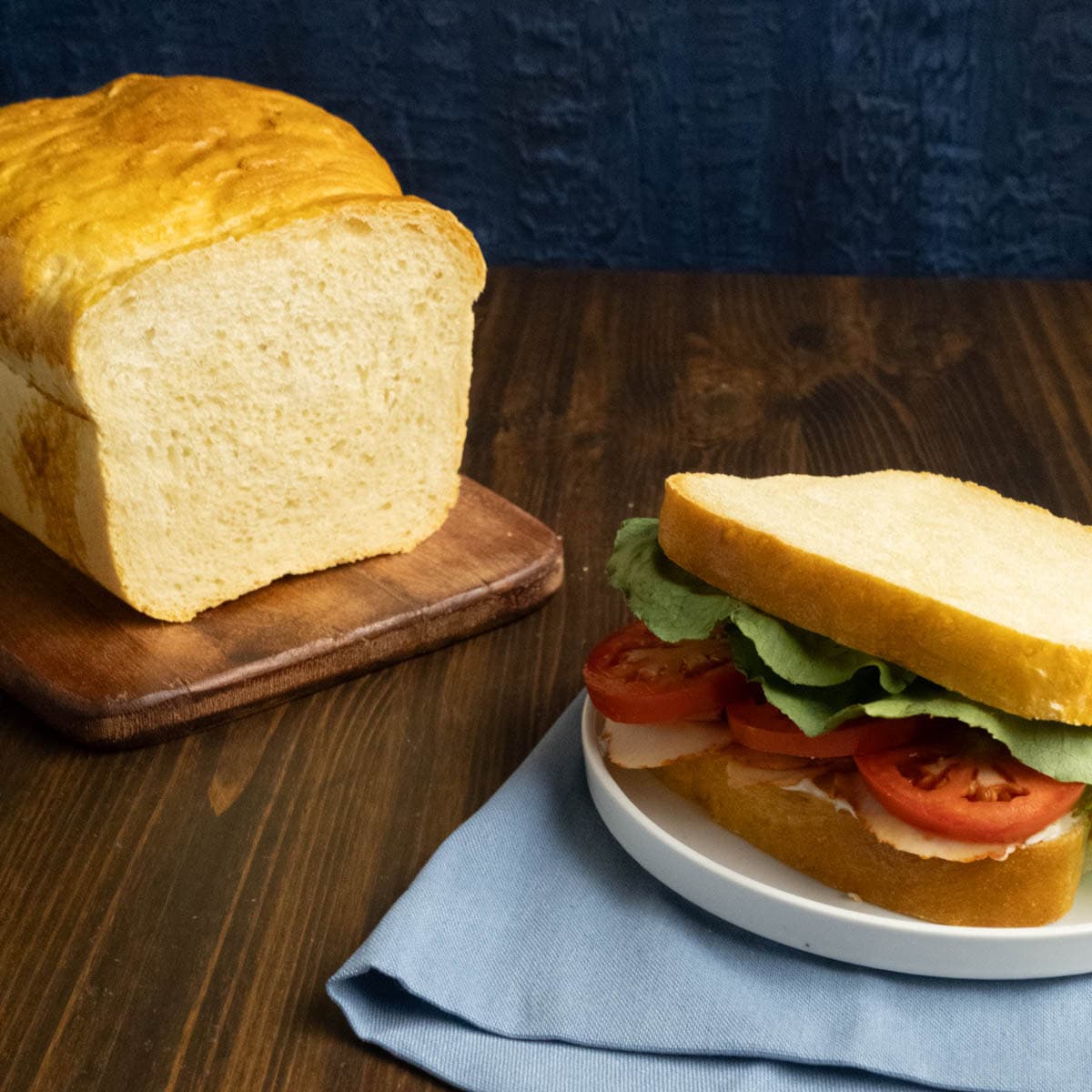
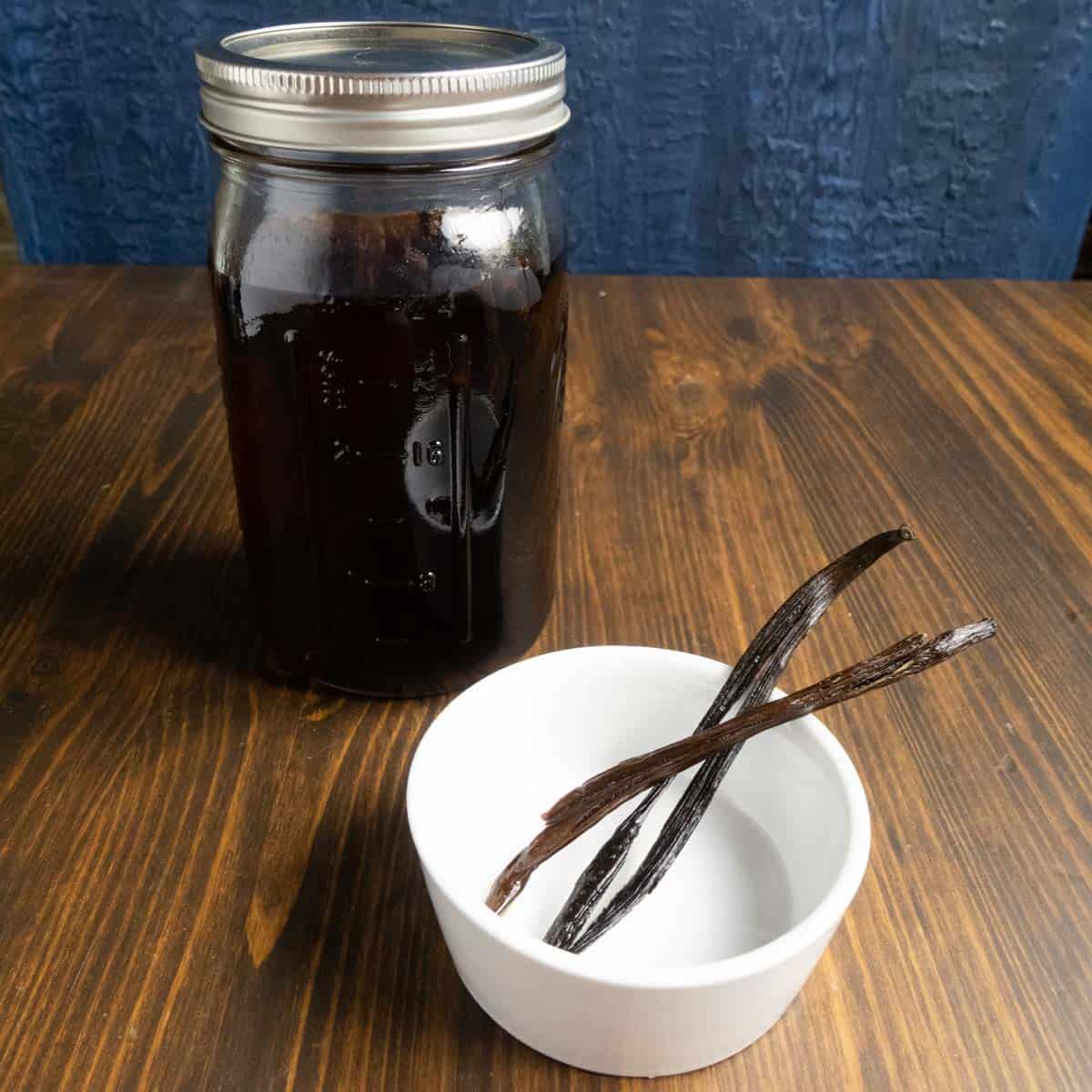
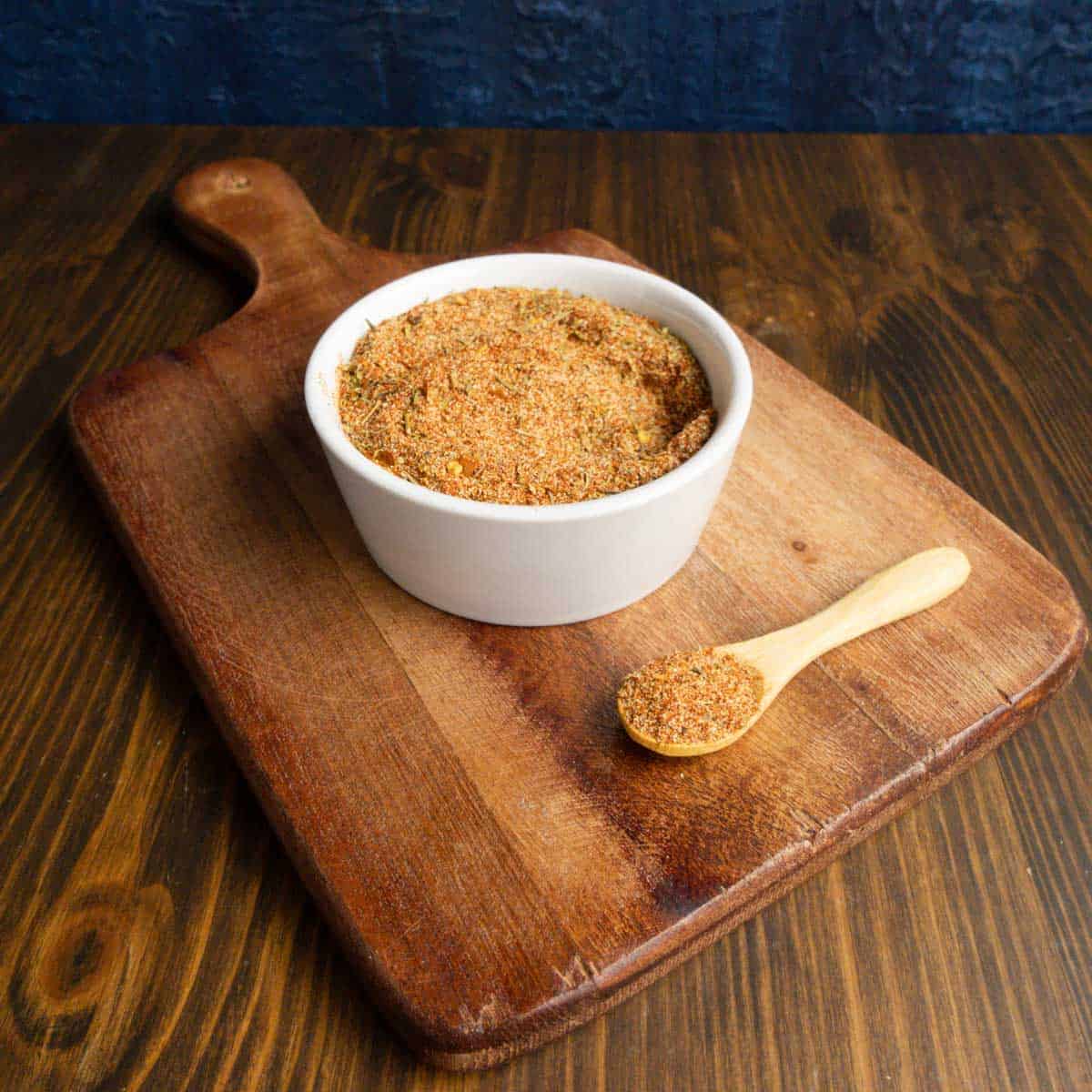
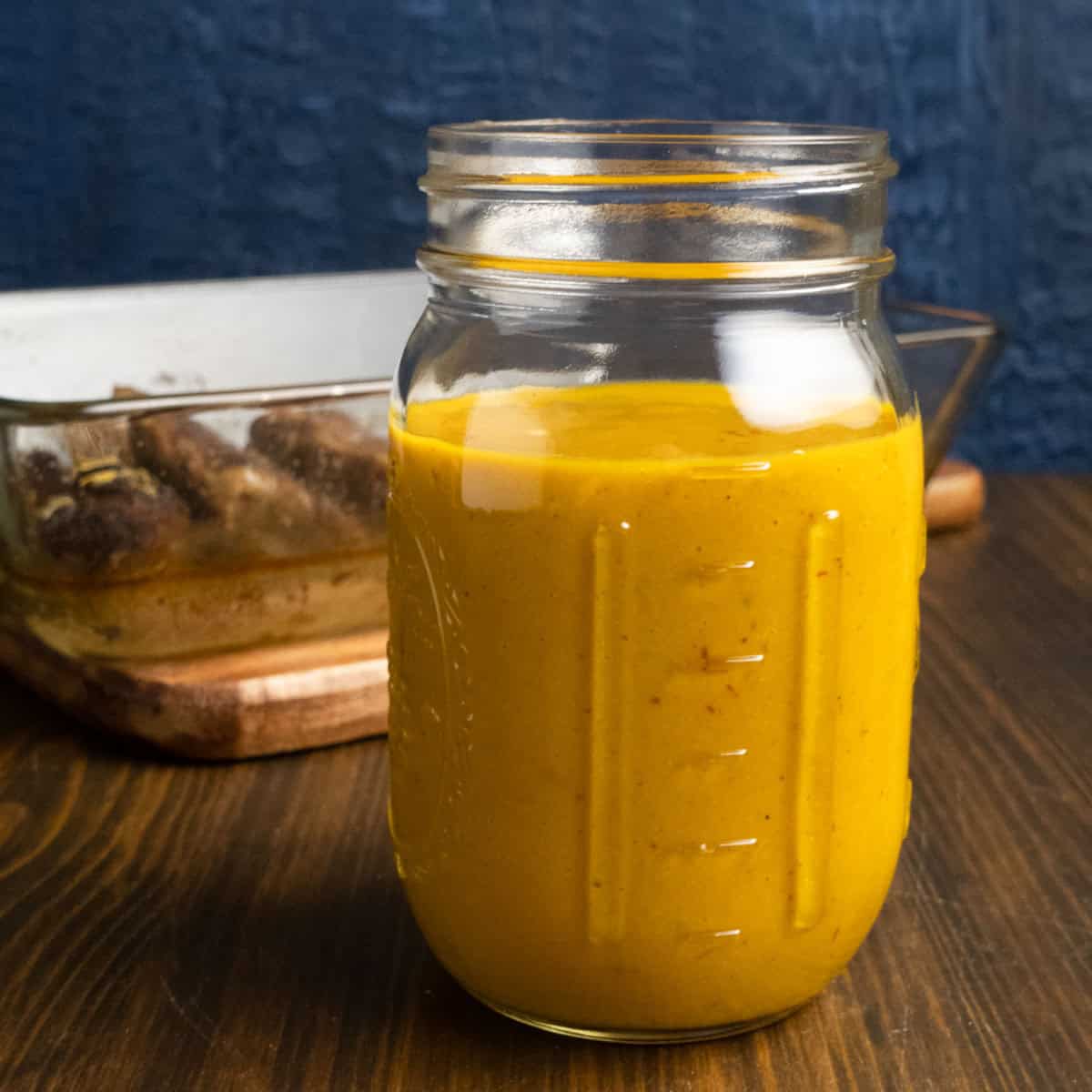
Using my chicken bones and vegetable scraps to make delicious stock is my favorite way to waste less and get more out of my ingredients.